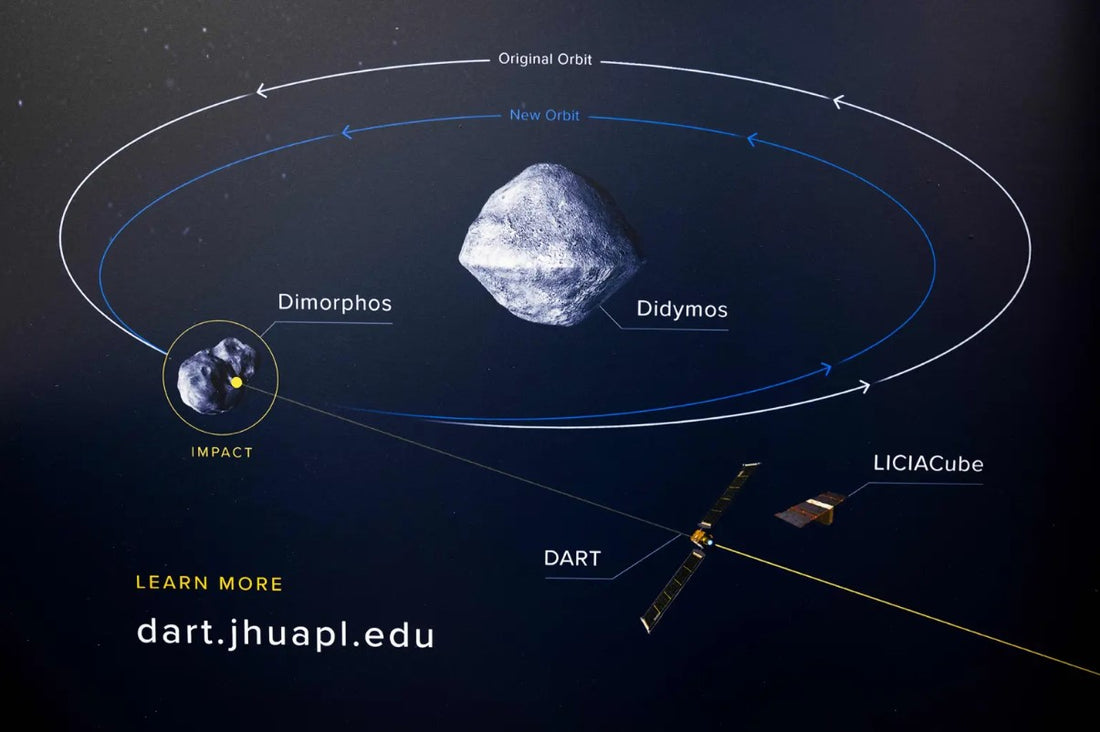
SUCCESS! DART Asteroid Impact Exceeds Minimum Goal by 2500%
Share
Observations of the Didymos/Dimorphos system over the past two weeks confirm NASA's DART mission substantially altered Dimorphos's orbit - the first time humans have permanently altered an object's orbit.
The finding indicates that a spacecraft can deflect threats by slamming into a space rock under the right conditions. Further investigations continue to improve estimates of what is possible for future cases.
The asteroid Dimorphos orbited its larger partner in 11 hours, 55 minutes, when NASA launched the DART mission. In order to be considered a success, the DART mission needed to reduce that time by 73 seconds. Anything less would have indicated a mission failure, such as partially missing the target or some fundamental obstacle to moving asteroids.
Because of the post-impact Dimorphos orbiting Didymos in 11 hours 23 minutes, these worries have been dispelled like the asteroids in Hollywood's imaginings of such missions. In this case, at least, we are able to change an asteroid's orbit without relying on a great deal of force. A 32-minute shift is 25 times that minimum goal.
This just in: The #DARTmission impact is confirmed to have changed the orbit of moonlet Dimorphos around its asteroid Didymos.
— NASA (@NASA) October 11, 2022
For the first time ever, humans changed the motion of a celestial object. More details: https://t.co/aQj8N7fnuV pic.twitter.com/NLR6AqEcaO
“This result is one important step toward understanding the full effect of DART’s impact with its target asteroid,” said NASA’s Dr Lori Glaze in a statement. “As new data come in each day, astronomers will be able to better assess whether, and how, a mission like DART could be used in the future to help protect Earth from a collision with an asteroid if we ever discover one headed our way.”
“We conducted humanity’s first planetary defence test, and we showed the world NASA is serious as a defender of this planet,” NASA Administrator Bill Nelson said at a news conference.

A new stunning image shows that two days after NASA's DART spacecraft slammed into the asteroid Dimorphos, the space rock had grown a tail of glowing debris extending thousands of miles.
Asteroid threats are not solved by the success of the mission. The asteroid Dimorphos measures just 170 meters across. According to estimates, the "dino killer" was 60 times as broad and 200,000 times as massive. DART would have been insignificant.
Asteroids and comets have vastly different compositions, as demonstrated by meteorites. It is possible for something to work on one asteroid and not on another. For example, how a “rubble pile” asteroid would have responded to an impact like this is unknown.
It may only be solved by crashing a lot of spacecraft into different types of asteroids, but for now astronomers are mining the data from this mission.
As part of that study, we will examine the ejecta thrown off by Dimorphos, as well as how much of DART's 3.5 million kgm/s momenta was transferred to Dimorphos. According to Newton's laws, the many tons of rock observed escaping in one direction must have caused Dimorphos' orbit to change.
We will be able to refine our estimation of the effects of the Didymos/Dimorphos system after the Hera mission visits the system in 2026.
There is no imminent threat to Earth from either asteroid. The orbit of Dimorphos around Didymos made it easy to measure the mission's success or failure this way.
QUESTION: Do you think we’ll stop an asteroid in the near future?
You’ve come this far…
Why not venture a little further into A.S.S. - our exclusive Australian Space Society.
And keep thrusting Australia into the deep unknown…
#Space_Aus




